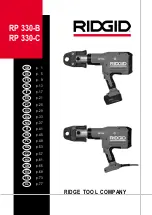
The Manual
There is quite a lot of information in this man-
ual, so here is a run down of each section and
what you are likely to find.
The manual is a work in progress and we
would appreciate your feedback. Please head
to the forums if you have any ideas or con-
structive criticism. As the manual is digital, we
will be updating it regularly.
The Bill of Materials (BOM) is a list of parts and
their values. This can be used to find replace-
ment parts or to check the datasheets for each
component.
This will show you where each of the com-
ponents, found in the BOM, will be soldered.
The schematic shows the circuit design in it’s
simplest form. Each part of the circuit is shown
separately. Connections within these sections
are shown with white lines. You can find tags
next to pins connected to other parts of the
circuit. Each tag has a corresponding tag in
the part of the circuit that it is connected to.
The rest of the Circuit section of this manual
explains how and why the circuit works. You
can skip this bit and head straight to building
your kit, then check back later to learn how it
works. Or you can go head first into the how
and why, then start building. It’s up to you.
This is where you can learn how to solder
your components to the PCB. The tips at the
start are very useful. They may prevent you
from getting frustrated. The soldering iron can
be hard to tame. Make sure to keep that tip
tinned and shiny! The diagrams on the right
pages show the components mentioned in
the instructions. You can use this to match the
components to the footprints on the board,
and to make sure you are using the correct
resistor in the correct place.
Be sure to go through this section to minimise
any risk of breaking something. If you have a
short and you connect the board to power, you
might overheat a component, or burn out the
power supply.
The Component Index will give you details
about each component (except some connec-
tors). We’ve included information about how
the component works, its construction, how to
find out if it has failed and much more. You can
use this as a reference when designing circuits
or trying to fix them.
Содержание SABER CARD
Страница 1: ...I N S T R U C T I O N M A N U A L SABER CARD v0 92...
Страница 7: ...CIRCUIT Circuit Component Layout D2 R4 U2 D1 R1 R2 C1 C2 R3 U1 D3 D4 D5 D6 D7 D8 D9 D10 D11...
Страница 13: ...ASSEMBLY D2 R4 U2 D1 R1 R2 C1 C2 R3 U1 D3 D4 D5 D6 D7 D8 D9 D10 D11...
Страница 15: ...ASSEMBLY D2 R4 U2 D1 R1 R2 C1 C2 R3 U1 D3 D4 D5 D6 D7 D8 D9 D10 D11...




































